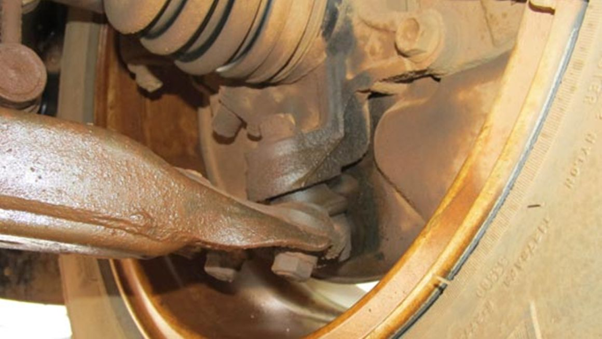Bad ball joints: symptoms and how to fix them

Ball joints are a vital component of the suspension systems of almost all cars. It is a small metal object whose bionic design is similar to the ball-and-socket joints of four-legged animals. Yes, just like cats and dogs, your car’s mobility depends on the small movement allowed by its joints.
The suspension system allows your car to move up and down when you drive over bumps. This is possible thanks to ball joints. You can also drive over said bumps while turning the wheels at the same time. Again, thanks to ball joints. This metal assembly is also responsible for holding the wheel to the car. Ball joints connect the upper control arm to the steering knuckle, to be specific.
And just like natural bone structures, ball joints are not designed to last forever. They will suffer an ache–or an injury if you will–that will affect your car’s overall movement. It could be due to time or the stress the ball joints receive on your daily drives.
What do bad ball joints look like?
When a ball joint goes bad, it could be due to the ball itself wearing down inside the socket or the socket itself wearing out. When this happens, the ball comes out of the socket. A possible result is a wheel folding in or folding out and ultimately coming off.
What are the symptoms of bad ball joints?
How do you tell if the ball joints of your car are bad? You can check the ball joints while moving the wheel up and down and if you see that the ball can move up and down inside the socket, that’s not a good sign because ball joints should fit snugly. While driving, the following are symptoms you should look out for:
- Uneven tire wear
- The car pulling to one side
- Loose steering
- Clunking noises when turning or driving over bumps
- Vehicle vibration
- Reduced suspension travel
What are the causes of bad ball joints?
Age and wear are the most common reasons why ball joints go bad especially if the car is driven regularly and over extreme terrains at that. Potholes, rough roads, and practically invisible speed bumps are not exactly friendly to your car’s ball joints. But what damages ball joints even faster is impact damage, especially when the car is often overloaded. The impact and stress that hitting a pothole or a curb brings to the ball joints are exponentially greater when the car is loaded with heavy stuff.
Exposure to elements like heat, friction, and corrosion also significantly affects the health of your car’s ball joints.
How can you protect your car’s ball joints from quick deterioration?
Regular inspection and maintenance are at the top of the list. Quickly replacing worn ball joints will help you save a lot on maintenance costs because driving on bad ball joints can lead to bigger car disasters. And when you do replace them, make sure to go for the heavy-duty ones so you get the most of your money.